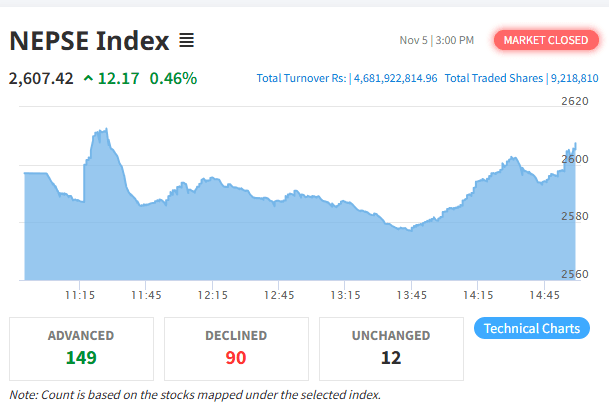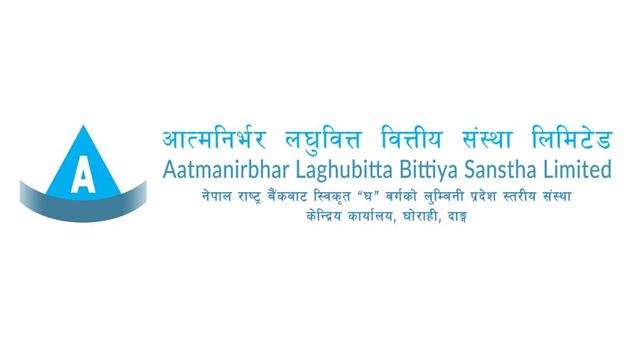Nepal Infrastructure Bank Sees Significant Growth in Q3 2081, Despite Dip in Net Profit
Author
Nepsetrading

Kathmandu, April 21, 2025 – Nepal Infrastructure Bank (NIFRA) has released its financial performance report for the third quarter of the fiscal year 2081 (Chaitra 2081), showcasing notable growth in key areas while grappling with a decline in net profit compared to the same period last year. The bank’s unaudited financial statement highlights a robust increase in deposits and loans, alongside a drop in profitability metrics, signaling a mixed performance as it navigates the evolving economic landscape.
Strong Growth in Core Banking Operations
As of Chaitra 2081, Nepal Infrastructure Bank reported a staggering 685.55% increase in deposits from customers, rising from Rs. 991,072 thousand in Chaitra 2080 to Rs. 7,785,403 thousand. This remarkable growth reflects the bank's successful efforts in mobilizing funds and expanding its customer base, a critical factor for infrastructure-focused financial institutions in Nepal, where large-scale projects require substantial capital.
Similarly, loans and advances to customers grew by 19.62%, reaching Rs. 24,501,046 thousand from Rs. 20,482,541 thousand in the same quarter of the previous year. This expansion indicates sustained demand for credit, likely driven by infrastructure projects and development initiatives that the bank supports as part of its core mandate.
The bank’s reserve and surplus also saw a significant uptick, growing by 62.84% to Rs. 3,747,583 thousand from Rs. 2,301,358 thousand. However, the share capital remained unchanged at Rs. 21,600,000 thousand, suggesting that the bank has not issued new shares during this period.
Profitability Metrics Under Pressure
Despite the impressive growth in deposits and loans, Nepal Infrastructure Bank faced challenges in maintaining profitability. The bank’s net interest income for the third quarter of 2081 stood at Rs. 1,481,882 thousand, a 24.12% decline from Rs. 1,952,877 thousand in the same period of 2080. This reduction could be attributed to tighter interest margins, possibly due to competitive pressures or changes in the cost of funds.
Net fee and commission income, however, doubled, rising by 109.04% to Rs. 13,366 thousand from Rs. 6,394 thousand, reflecting the bank’s success in diversifying its revenue streams through fee-based services. Despite this, total operating income fell by 23.68% to Rs. 1,495,248 thousand from Rs. 1,959,272 thousand, largely due to the decline in net interest income.
Impairment charges remained stable at Rs. 285,130 thousand, showing no significant change from the previous year’s Rs. 286,033 thousand. However, operating profit and profit for the period both decreased by 8.88%, standing at Rs. 1,285,703 thousand and Rs. 900,074 thousand, respectively, compared to Rs. 1,410,984 thousand and Rs. 987,373 thousand in Chaitra 2080.
The bank’s distributable profit for the period also declined by 8.84%, reaching Rs. 769,513 thousand from Rs. 844,080 thousand, reflecting the overall pressure on profitability.
Key Financial Ratios and Metrics
Earnings per share (EPS) saw a slight decline of 0.53%, dropping to Rs. 5.56 from Rs. 6.09. The price-to-earnings (PE) ratio improved marginally to 49.77 from 34.46, indicating that the market may still view the bank’s stock favorably despite the dip in earnings. Net worth per share increased to Rs. 117.81 from Rs. 110.65, a positive sign for shareholders, though the capital fund to risk-weighted assets (RWA) ratio decreased by 15.90% to 77.71 from 93.61, suggesting a potential reduction in the bank’s capital adequacy buffer.
The non-performing loan (NPL) ratio improved slightly to 0.21%, while the credit-to-deposit ratio dropped to 74.34% from 75.10%, indicating a more conservative lending approach relative to the growth in deposits.
Strategic Implications and Outlook
The third-quarter performance of Nepal Infrastructure Bank paints a picture of a financial institution experiencing robust growth in its core operations while facing challenges in profitability. The significant increase in deposits and loans underscores the bank’s pivotal role in supporting Nepal’s infrastructure development, a sector critical to the country’s economic growth. However, the decline in net interest income and overall profit highlights the need for the bank to optimize its cost of funds and explore strategies to enhance interest margins.
The doubling of net fee and commission income is a promising sign, suggesting that the bank is successfully diversifying its revenue sources. Moving forward, Nepal Infrastructure Bank may need to focus on improving operational efficiency and managing its capital adequacy to ensure long-term sustainability, especially as it continues to scale its lending activities.
As Nepal’s infrastructure sector continues to grow, driven by government initiatives and private investments, Nepal Infrastructure Bank is well-positioned to capitalize on these opportunities. However, addressing the profitability challenges will be key to maintaining investor confidence and supporting the bank’s ambitious growth trajectory.



